Family Day, August 9, 2006
London Knowledge Lab
Click to enlarge:
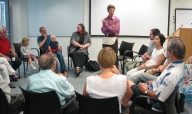 SV
SV
|
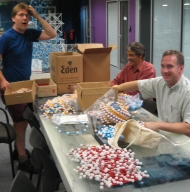 SV
SV
|
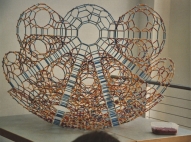 MG
MG
|
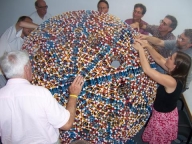 DD
DD
|
 DD
DD
|
 DD
DD
|
 DD
DD
|
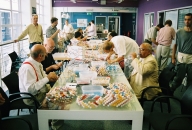 DR
DR
|
 DD
DD
|
 DR
DR
|
 DD
DD
|
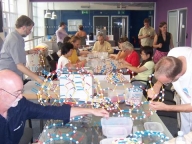 DD
DD
|
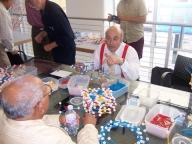 DD
DD
|
 DD
DD
|
 MG
MG
|
 DD
DD
|
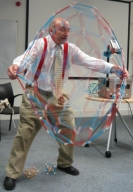 SV
SV
|
 SV
SV
|
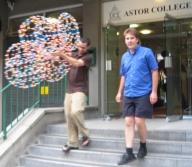 SV
SV
|
 SV
SV
|
 DD
DD
|
 SV
SV
|
 DR
DR
|
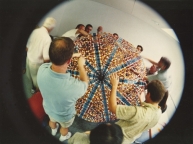 MG
MG
|
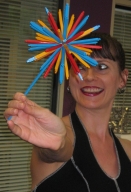 SV
SV
|
 DR
DR
|
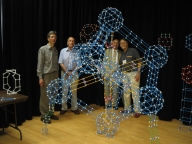 SV
SV
|
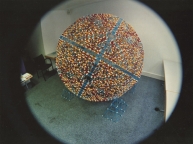 MG
MG
|
Here are some photos from the Family Day at Bridges London, 2006. The event consisted of various workshops on Zome, led mainly by Daniel Duddy, Paul Hildebrandt, and Samuel Verbiese.
From my point of view, the highlight of the event was the construction of the "omnitruncated 120/600-cell". Most of these photos feature this gargantuan object, resembling a large, highly structured ball. The ball is about 6 feet in diameter.
This model is certainly unique among Zome models. Of all of the convex uniform H4 polychora, this is the only one whose vertices coincide with the elements of its automorphism group. With 7,200 connector balls and 14,160 struts, no other Zome model ever built has required as many pieces. This particular project required approximately 200 hours of manual labor. About 40 people helped over the course of a period of about 8 hours.
Credit for leading this project belongs mainly to Daniel Duddy, a student at the City College of New York. He devised a system for constructing the model which would maximize the amount of fun had by all who participated. He also works with Paul Hildebrandt, president of the Zome company, who graciously supplied all the parts.
Paul also played an absolutely critical role by tooling a "super-short" red strut which was needed in this construction. While it is theoretically possible to build this object using the standard Zome pieces, most likely it would be too heavy to stand up under its own weight. Thus, the super short red strut was made so that we could scale down all the pieces.
Despite the fact that we considered this model "light enough" to build, Scott Vorthmann and I designed some structural supports for it, visible in a few of the photos. Scott Vorthmann is responsible for having written vZome, a program which allows the user to make "virtual" Zome models on a computer screen.
Much credit also belongs to Phillip Kent for hosting these workshops at the London Knowledge Lab and to Reza Sarhangi and John Sharp for organizing the Bridges conference.
Photo credits belong to Dan Duddy (DD), Michael Green (MG), David Richter (DR), and Samuel Verbiese (SV).
September 13, 2006